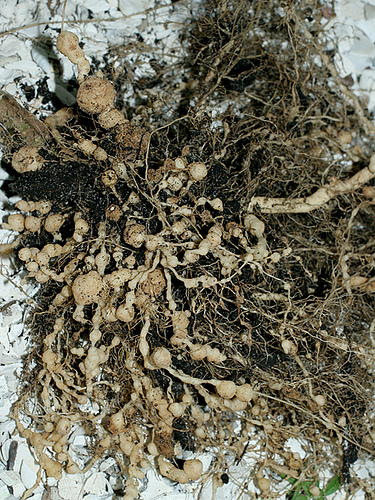
Eelworms or Nematodes
Heterodera cacti
Please go to our Glossary link at the bottom of the page for explanations of scientific terms
Identification
First signs of attack by eelworms is that the plant stops growing, becoming shrivelled. Examination will reveal dead roots. There are three types of eelworm:
1. Root-knot eelworm. The larvae, which are about 0.5 mm long, bore into the roots, damage the plant by sucking the sap, and cause knot-like swellings due to secretions from their saliva glands; the swellings quite frequently reach the size of anything from a walnut to a fist.
2. Cyst-forming eelworm. These pests live in the roots. They burst the root epidermis, and then the females cling to the outside of the roots as brown, lemon-shaped cysts.
3. Free-living nematode. These eelworm do not settle in particular places but migrate from plant to plant by their own movement, or they can be are carried by water. A single contaminated plant can quickly infest an entire collection. Nematode are about 1 mm long, colorless, and worm-like in shape. An eelworm attack is often not noticed until the plant begins to look stunted from considerable damage to the roots. Eelworm multiply rapidly, and their larvae can become dormant for months or even years, if their living conditions are unfavorable. These persistent pests may also be spread by careless handling of infected plants, pots, and boxes; by contaminated soil, greenhouse staging, and tools; or even by the soles of shoes.
Prevention
This pest is more prevalent in the USA, but care should be taken that it is not introduced on imported plants.
To prevent, raise plants above ground, use nematode free substrate, pots and plants.

Cysts of the Root Knot Nematode
Cure
Best to cut off all roots and treat as a cutting!
Roots can be washed thoroughly and then dipped in water at 45 deg. C for half an hour - cactus roots (and Euphorbias) can stand this. Other succulents and epiphytic cacti will not withstand this treatment. You will need a good thermometer!
